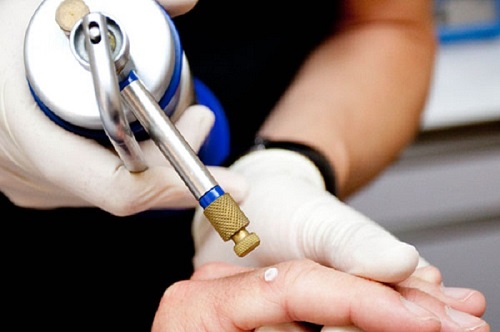Cryosurgery is a type of surgery that involves the use of extreme cold to destroy abnormal tissues, such as tumors.
The surgery most often involves the use of liquid nitrogen, although carbon dioxide and argon may also be used. When liquid nitrogen has a temperature between -346 and -320°F, it instantly freezes nearly anything that’s in contact with it. In the case of human tissue, it can kill and destroy cells upon contact. This is important when the cells you want to kill are cancerous.
Cryosurgery is typically used for tumors or precancerous lesions found on your skin. However, some tumors inside the body can be treated this way as well. Advances in cryosurgery technology have dramatically reduced the long-term side effects once associated with the treatment. More studies are needed on the long-term side effects and effectiveness of cryosurgery.
Cryosurgery, also called cryotherapy, is similar to the technique used when doctors freeze off warts using liquid nitrogen spray.
Why Cryosurgery Is Performed
Cryosurgery is used to destroy problem tissues in the body. In most cases of cancer, it’s not the first line of defense. However, it can be used when other forms of treatment have proven unsuccessful, especially if the cancer has returned following other treatments.
Cryosurgery is most often performed to treat cancers or precancerous lesions on the skin. It is, however, used on some internal organs, such as the liver, when disease and other problems make conventional surgery difficult or risky.
Cryosurgery is used as the primary treatment for early prostate cancer that’s contained in the prostate It’s also performed when cancer returns after other therapies.
Risks Associated with Cryosurgery
Cryosurgery does have risks, but they’re considered lower than other cancer treatments, such as surgery and radiation.
The risks associated with cryosurgery include:
- blisters
- damage to nearby healthy tissue or vessels
- infection
- a loss of sensation if nerves are affected
- pain
- scarring
- sexual dysfunction
- ulcers
- white skin at the site of the surgery
How to Prepare for a Cryosurgery
Your preparation for cryosurgery depends on the type of cryosurgery being performed. Cryosurgery for skin cancer, which is the main reason cryosurgery is used, requires little preparation on your part.
If your doctor is treating an internal organ with cryosurgery, you’ll probably be given the same instructions that you’d get before traditional surgery. You’ll be asked to fast for 12 hours beforehand and arrange for a ride home from the procedure.
Before the procedure, tell your doctor if you have an allergy to anesthesia, as well as any and all medicine you’re taking, including over-the-counter medications and nutritional supplements.
Your doctor will provide you with complete instructions for preparing for the surgery. It’s important that you follow them.
How a Cryosurgery Is Performed
Your doctor will place liquid nitrogen on your skin using a cotton swab or spray. A numbing medicine may be used to prevent any pain or discomfort.
If an internal area is being treated, your surgeon will use a scope, which is a flexible tube that can fit into various openings in your body, such as the urethra, rectum, or a surgical incision. The liquid nitrogen is fed to the area under treatment and applied to the targeted cells. The cells freeze, die, and then will be slowly absorbed by your body.
Your doctor will use imaging equipment, such as an ultrasound, as a guide for carrying out the procedure.
Following Up After Cryosurgery
After most cryosurgeries, you can go home the same day. However, you may have to stay in the hospital for a few days if the surgery was on an internal organ.
After the procedure, you’ll need to care for any incision wounds or places where the skin has been frozen. Your doctor will give you instructions. Care typically involves keeping the area free of contaminants and changing the bandages to prevent infection.
You’ll have follow-up appointments in which your doctor will determine how successful your treatment was, if you have any complications, and whether you’ll need more cryotherapy.
REFERENCES
- Basic Science. (n.d.). International Society of Cryosurgery. Retrieved June 12, 2012, from
societyofcryosurgery.org/science/basic-science-link-to-cryo-basic-intro.htm.php - Cervix treatment – cryosurgery. (n.d.). National Library of Medicine – National Health Institutes. Retrieved June 12, 2012, from
nlm.nih.gov/medlineplus/ency/article/002917.htm - Cryotherapy. (n.d.). National Library of Medicine – National Health Institutes. Retrieved June 12, 2012, from
nlm.nih.gov/medlineplus/ency/article/007506.htm - Cryotherapy for prostate cancer. (n.d.). Mayo Clinic. Retrieved June 12, 2012, from
mayoclinic.com/health/cryotherapy-for-prostate-cancer/MY01634 - Cryosurgery in Cancer Treatment: Questions and Answers. (n.d.). National Cancer Institute. Retrieved June 12, 2012, from
cancer.gov/cancertopics/factsheet/Therapy/cryosurgery - Cryosurgery in cancer treatment: Questions and answers. (2003, September 10)
cancer.gov/cancertopics/factsheet/Therapy/cryosurgery - Cryosurgery for skin cancer. (n.d.)
asds.net/Cryosurgery-for-Skin-Cancer.aspx - Mayo Clinic Staff. (2013, April 23). Cryotherapy for prostate cancer
mayoclinic.com/health/cryotherapy-for-prostate-cancer/MY01634 - https://www.healthline.com/health/cryosurgery

